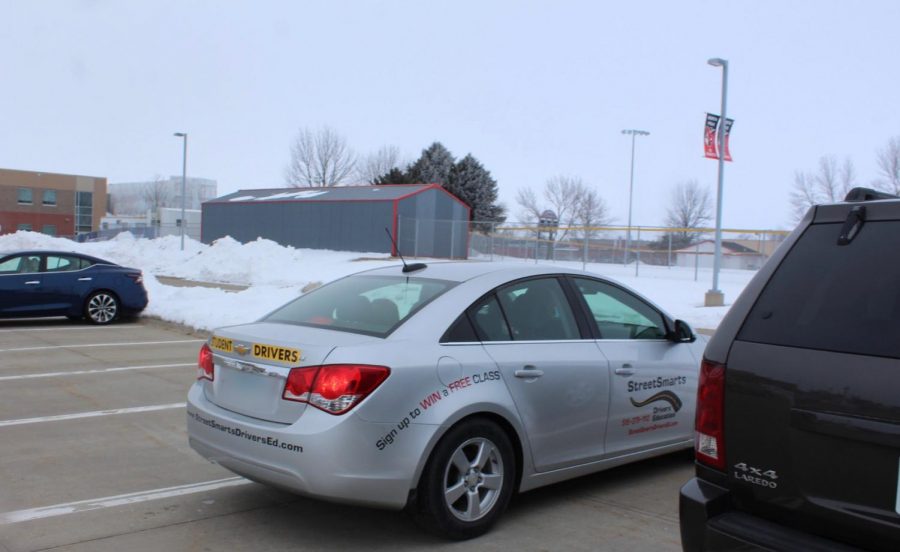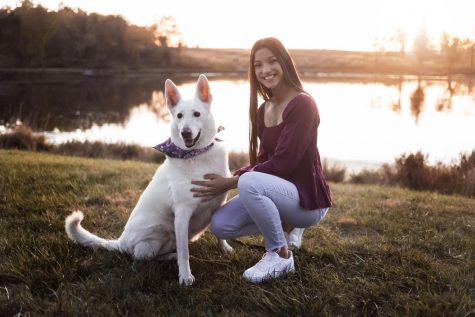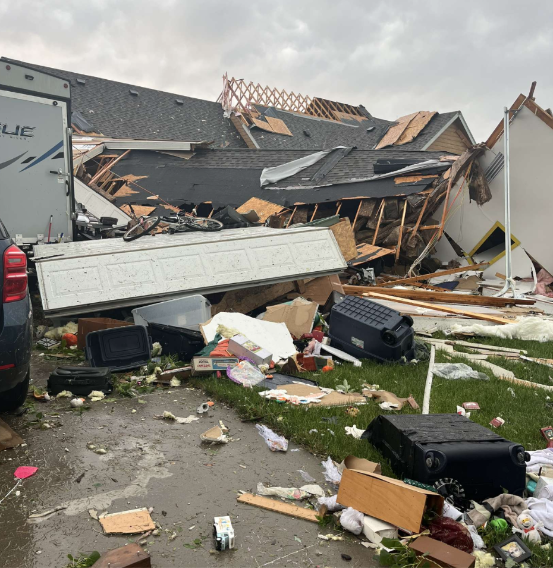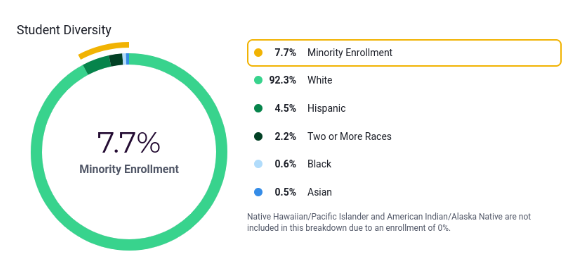Winter Driving
How To Stay Safe
Driver’s Education students practicing parking in the North Polk High School parking lot for their first drive on Feb. 3 after school.
February 3, 2021
Children driving during the winter is a scary time for all parents; the roads are slick, snowy, icy, and wet.
Statistically shown, through the Department Of Transportation website, approximately 24 percent of weather-related vehicle crashes occur on snowy, slushy, or icy roads. Sadly, 1,300 people are killed and 116,800 people are injured during these crashes. Nobody wants to become a statistic.
A majority of the students at North Polk High School transfer themselves to and from school daily. Ian Blanchard, a sophomore who typically drives a Mini Cooper, has been driving alone for almost a year and has never gotten into a car accident. He said, “I feel safe [while driving] because I am confident in my driving skills” and he feels safe driving in the snow because the car he drives can handle the snow great.
Isabelle Rutledge is currently a junior and has recently had knee surgery, but is still able to drive herself to and from school. She mentioned that her knee does not affect her driving at all and still feels comfortable driving in the winter for the majority of the time. Rutledge owns a Chrysler 200 that she typically drives to and from school, but she stated “the type of car I have doesn’t really make me feel comfortable. It slides around a lot so I prefer to drive our Jeep so it can be in four-wheel drive.” Rutledge is able to take steps before driving to make sure she will be comfortable behind the wheel, allowing her to drive safer during the bad weather.
From a senior perspective, Noah Richardson states, “I rarely let the weather dictate whether I go do something or not” because he has been driving alone for about three years and feels fairly confident in his driving capabilities. Richardson believes his van does average in the bad weather, not perfect, but not bad. He stated, “My brother drives a rear-wheel-drive, which can be really tough,” which shows that the type of car being driven can impact how well a person is able to drive in the winter.
The views received from North Polk students were very positive and made it seem as though driving in winter is nothing to stress about as long as you drive carefully while watching for others around you. On the other hand, how do children drive safely during bad weather? Steve Latimer, Driver’s Education instructor through the North Polk School District, and Riley Blaylock, North Polk’s school resource officer, give their advice to the newer drivers on how to stay safe during difficult weather.
Latimer has been driving for about 45 years and Blaylock has been driving for 14 years. They both mentioned key things to leave in your car at all times, such as: a shovel, a blanket, multiple flashlights and batteries, an ice scraper during winter, snacks, and a battery-powered phone charger. Blaylock said his biggest tip to new drivers who are inexperienced with driving in the snow is to “give yourself more time than usual to get to your destination. The more drive time you give yourself to get to your destination, the slower you can allow your speeds to be. The lower the speed [traffic conditions permitting], the more control you have over your vehicle.” Latimer and Blaylock both recommend slowing down while driving because Latimer also mentioned “to slow down. When we get a chance to drive in the snow, pretend that you have no brakes so you can stop the car on its own.”
While driving in the snow, there is always a chance of sliding due to snow and ice on the roads. Due to the risk there is of sliding there are proper ways to break and correct your car. Latimer shared, “Sometimes when you are driving you push the brake and if the car starts to slide then you should lay off the brakes, and then start to push the break down and lift your foot up again then push down and repeat until your car comes to a complete stop.” Some cars have an anti-lock braking system, also known as ABS, which means a person can push all the way down on their breaks to stop, but the car break will automatically do what Latimer suggested. Equally important, a person should know how to properly correct their car when it starts to slide on the road. Blaylock stated that if your car begins to slide when the roads are slick “do not slam on the brakes, or attempt to rapidly accelerate. Both of these actions will cause your tires to lose what little traction you may have. Instead, let off of the gas and try to allow your vehicle to slow down. Once the vehicle begins to naturally slow down and you believe there may be some traction under you lightly begin to tap the brakes. Do not jerk the steering wheel.”
Last, some simple ways to stay safe on the roads are common things people typically take for granted. For instance, when you are driving with friends, Latimer said to “Keep the radio down, don’t carry long conversations with the passenger when you are a new driver.” Besides being safe with other passengers in the car, there are things a student should do as a driver to maintain everyone’s safety. Blaylock has dealt with many student vehicle crashes driving to and from school. To make it to your destination safely he suggests “any text you receive while driving can wait for a response. If you feel the need to respond to something on your phone, or need to use your navigation, find a safe area to pull over and then do so. This is especially important to remember and practice during the winter months.”











Olivia • Feb 11, 2021 at 12:48 pm
I feel so enlightened! Keep up the great work Alexis! So proud!!